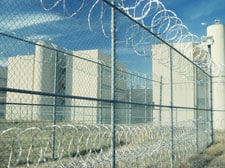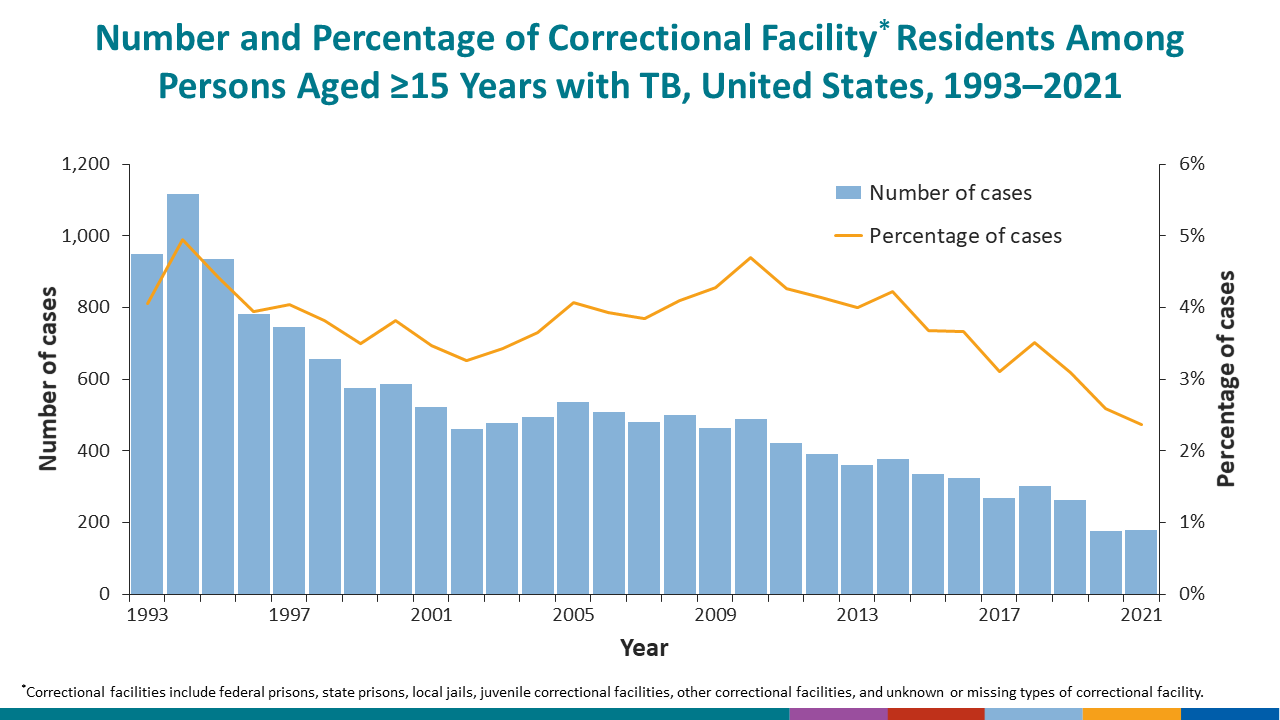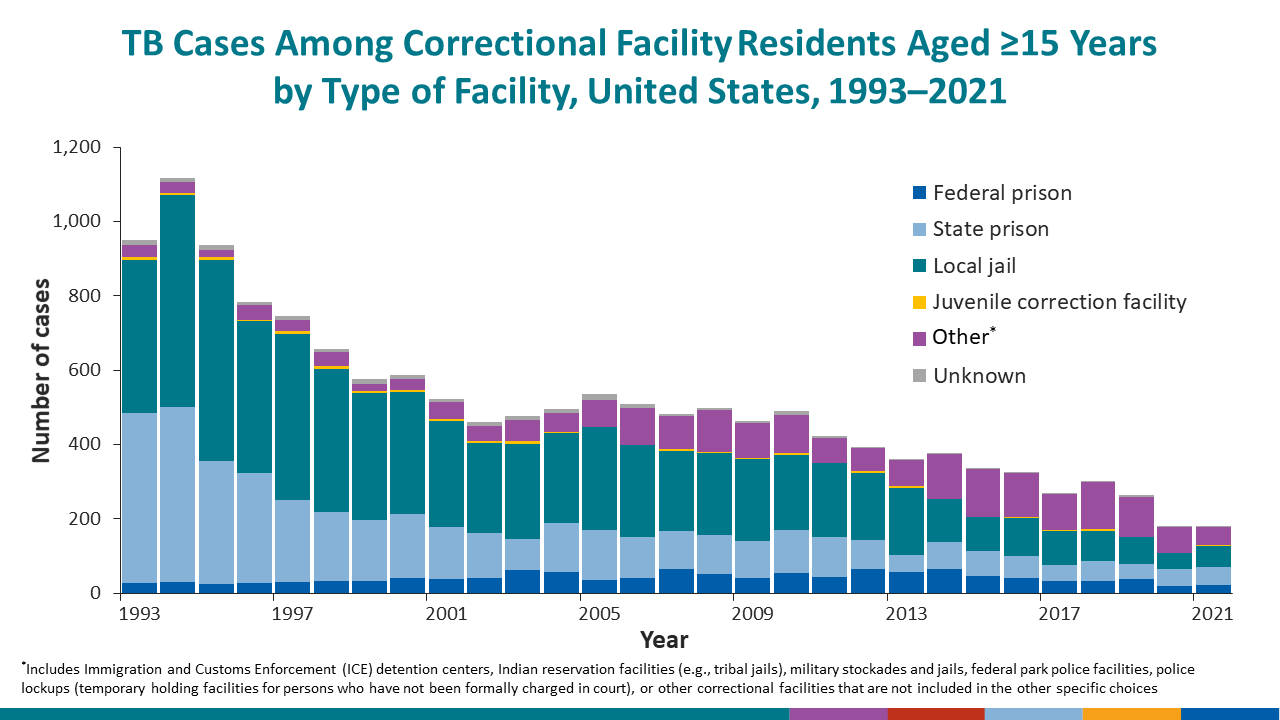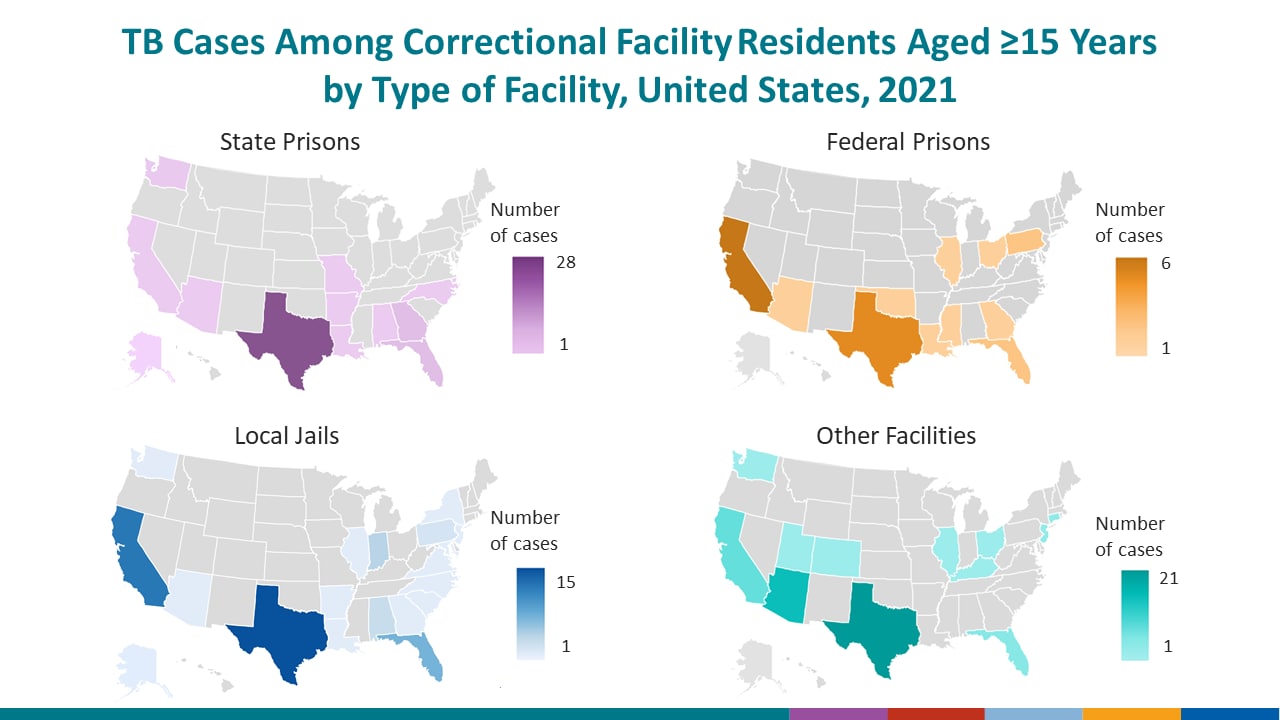TB and People Living in Correctional Facilities in the United States
Background
People living in congregate settings, including correctional facilities and detention centers, are at an increased risk of becoming infected with TB germs compared to the overall population.
By the Numbers
In 2021, U.S. state, local, and territorial health agencies reported a total of 7,882 TB cases to CDC.
In 2021, 179 cases of TB disease (2.3%) reported in the United States occurred among people 15 years of age or older who were current residents of correctional facilities.
Among the TB cases reported among residents of correctional facilities in 2021, the percentage in
- Local jails increased from 23.0% in 2020 to 31.3% in 2021,
- State prisons increased from 26.4% in 2020 to 27.9% in 2021,
- Federal prisons increased from 10.7% in 2020 to 12.3% in 2021, and
- Other correctional facilities decreased from 38.2% in 2020 to 27.4% in 2021.
TB cases among persons 15 or older residing in correctional facilities are shown in the maps in the figure below by state prisons, federal prisons, local jails, and other correctional facilities, including Immigration and Customs Enforcement (ICE) detention centers. The maps are color-coded so that as the number of TB cases increases, the color becomes darker.
Read more in Reported Tuberculosis in the United States, 2021.
TB Control in Correctional Facilities
Effective TB prevention and control measures in correctional facilities include:
- Early identification of persons with TB disease through entry and periodic follow-up screening;
- Successful treatment of TB disease and latent TB infection;
- Appropriate use of airborne precautions (e.g., airborne infection isolation, environmental controls, and respiratory protection);
- Comprehensive discharge planning; and
- Thorough and efficient contact investigations when a TB case has been identified.
These measures should be instituted in close collaboration with local or state health department TB control programs and other key partners. Continuing education of people who are incarcerated and correctional facility staff is necessary to maximize cooperation and participation. To ensure TB prevention and control measures are effective, annual program evaluation should be conducted.

Resources on TB and Correctional Facilities
- CDC Recommendations
- At-A-Glance: CDC Recommendations for Correctional and Detention Settings: Testing, Vaccination, and Treatment for HIV, Viral Hepatitis, TB, and STIs
- Prevention and Control of Tuberculosis in Correctional and Detention Facilities: Recommendations from CDC MMWR 2006; 55 (No, RR-09, 1–44)
- Tuberculosis in Correctional Settings: What Corrections Staff Need to Know (Slide Set)
- Prevention and Control of Tuberculosis in Correctional and Detention Facilities (Slide Set)
- CDC Correctional and Public Health Resources by State
- Southeastern National Tuberculosis Center: Arresting TB: Understanding the Culture of Corrections
- National TB Controllers Association (NTCA) CorrectTB Resources
- Reported Tuberculosis in the United States, 2021
For additional CDC resources on TB, see Patient and General Public Materials and Health Care Providers and TB Program Materials.
- Interim Guidance on Management of Coronavirus Disease 2019 (COVID-19) in Correctional and Detention Facilities
- American Correctional Association
- Find TB Resources- Education Materials for TB in Corrections
- Federal Bureau of Prisons
- National Commission on Correctional Healthcare
- National Institute of Corrections
- National Institute of Justice
- National TB Controllers Association (Corrections Committee)
- United States Department of Justice
- United States Immigration and Customs Enforcement


